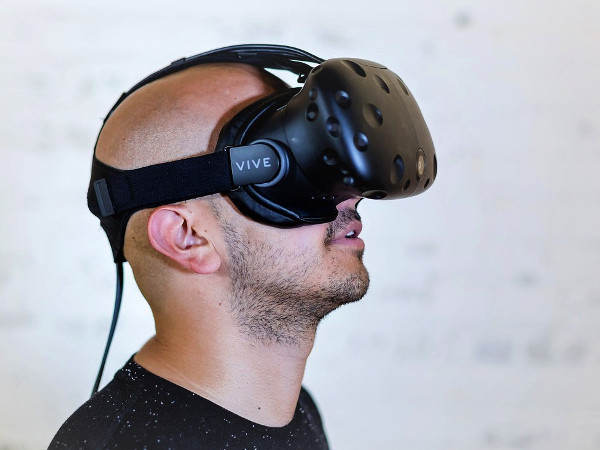Ben Jones talks about how using new technology can help communicate Christian traditions to the next generation.
As part of my work for Missional Generation, I spend my time working with young people to build confidence in talking about and sharing their faith. We do this in part by leading interactive youth work sessions where we help young people reflect on how God formed them, why and how Christ Jesus accepts them and why the power of the Holy Spirit needs to be at work within us to help us learn to live Missional shaped lives.
One of the things we have seen with these young people recently is the growth in popularity of Virtual reality and 360o thanks to developments in VR gaming, and 360 videos on social media. It became clear to us that this could be a useful tool to help young people experience faith in an interactive way.
As an adult, it can be concerning when we see young people engaging with new technology, especially if it is something we don’t fully understand ourselves. I work with teenagers all the time who are constantly plugged in and connected to their phones, interacting with all sorts of different people through different apps and software. A lot of the time we don’t know who is communicating with and what messages our teenagers are receiving.
But in spite of these perceived risks, new technology is also a great opportunity for us as Church. We have the opportunity to use that technology to help communicate the truth, meaning and purpose of the church. We need to be able to make sure that young people have the opportunity to explore meaningful activities that the churches do. This will help mark things that are important in maintaining our faith and strengthen links between teenagers and the whole church together as one community.
In June last year, I ran a triathlon and with the money raised we bought the equipment necessary to record and edit our own VR and 360 videos, and we bought a set of google cardboard headsets to allow people to watch them. Most youth workers will be used to showing a video clip from a popular movie or tv series and using it to illustrate a message about faith. We’ve taken much the same approach but using VR, so instead of a very passive experience we can capture more of a young person’s senses. Then once we reflected on that experience we can bring in some applied theology.
One way we have used this was with a Virtual Reality skydive experience with a school in Bradford to help teach on one of the school’s values, trust. I told the pupils about my own experience of skydiving, and how I had to trust the professional skydiver who I was strapped to, that he knew the correct way to secure me, how to do the correct preparation and checks beforehand and most importantly how and when to open the shoot once we were in the air.
Now I could have done that lesson just as a talk, and there would inevitably have been some students who listened but also some who disengaged. But by using VR and letting them experience that for themselves we were able to immediately grab their attention. Then, from that point, we could go on to talk about how in the school situation that person who they need to trust might be their teachers, their school, the school community and from a Christian perspective our trust and faith in God.
There are many schools who want to take their pupils to learn about Christian faith and tradition, who would like to visit churches but struggle to find opportunities because of budget or staff restrictions. But what if using VR we could take our experiences of church into the schools and can help to widen the understandings that pupils have of different church’s traditions and values.
I think anything that helps enhance someone’s awareness of the importance of traditions within the Christian faith is enabling others to grow within their own spiritual journey and it is a great opportunity. The Church has so many valuable traditions that it celebrates well, but the truth is, if we don’t teach and communicate those traditions to the next generation they risk becoming history. If they stop being relevant to young people they will eventually be forgotten. On the other hand if we can expose young people to those things in strong, visual and experiential ways, it can be a way of us saying ‘this is really important, and because it’s important we’ve adapted how we communicate it to not only connect with you but to allow you to see the impact it has on others’.
It would be amazing to be able to place a 360 camera in different churches and denominations as they celebrate Harvest, Easter or Christmas and create something that lets young people of a more technological generation engage with those experiences.
We don’t want to lose the importance of traditions, but we also don’t want to say that young people have to engage with traditions in the way that it has always been done. Wouldn’t it be great if churches grabbed the opportunities that new technologies offer? What could Harvest or Advent look like if we incorporated new technologies into those traditions?
If the church works with and embraces the understanding young people have around technology, together the Church can strengthen its voice and be at the cutting edge in society. One thing we are seeing is that young people have the answer, that young people can, and will, shape the arenas of life that they occupy. And that can be in good ways, or in bad ways. We want to see them shape those arenas of life with the Kingdom of God and with the resource that the Church is backing and supporting them.
If you are interested in finding out more about Missional Generation’s work, booking a VR session or supporting their work visit missionalgen.co.uk or find them on twitter as @missionalgen.

